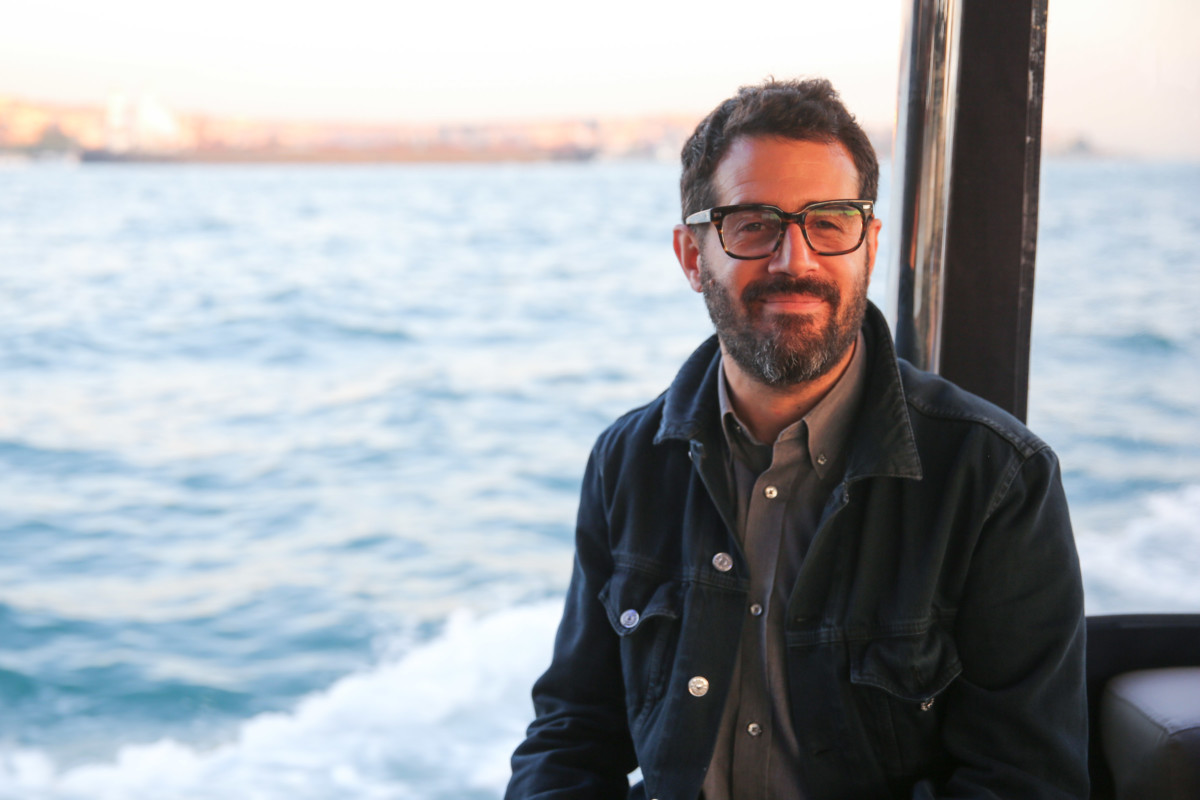
José Parlá started out as a graffiti writer, a form that is, pursuant to both its nature and that of municipal government, usually temporary. “It was ephemeral, and the only way to save it was to document it with photographs,” he told me. We were in Istanbul, at the sixth annual International Arts & Culture Festival. “And photographs,” he said, “led me to filmmaking.” We’d just come from the first showing of his short film, which he calls an “experimental documentary”; taking the same name as the massive 90-foot mural he painted for the lobby of One World Trade Center, ONE: Union of the Senses, it is a kinetic meditation on New York, its people, and the creation of the painting itself.
Set to a score by Leon Michels and his band El Michels Affair, a collection of jazz, funk, and Caribbean sounds that roil and evolve over the film’s 12 minutes, ONE follows Parlá’s work on the painting, from the eight months he spent on it in his Brooklyn studio (he doesn’t work with assistants) to the last two weeks of installation and touch-up in the Trade Center’s lobby. But this isn’t so much a document of Parlá’s painting as it is New York itself; not the story of the mural, but of its inspiration. He shot all over the city, on the 7 line in Queens and the F in Brooklyn, at the Graffiti Hall of Fame at 106th and Park, at the Trade Center and the Brooklyn Bridge, filming everyone from straphangers to street performers. He built a three-inch-deep pool along the Brooklyn waterfront for a dancer to cartwheel across. “I wanted to make a connection to the environment that I grew up in, and the city I live in, and to making art,” he said.
He considers the film, even the painting itself, “a time capsule,” something that might “show future generations what old New York was like.”
Parlá came to New York in the mid-’90s, but was imparted by the people he met and learned from then, artists and graffiti writers who’d come up in the city of the ‘70s and ‘80s, with a love of that pre-Giuliani New York. “The film is really inspired by that era, those elevated train lines and that movement… it really is about the birth of that era and that energy transcending through to today.” He was inspired by Stations of the Elevated, Manfred Kirchheimer’s documentary on the subway, scored by Charles Mingus, and its long shots of colorful cars rattling along the elevated tracks, a sight long since vanished from the city. He considers the film, even the painting itself, “a time capsule,” something that might “show future generations what old New York was like.” But Parlá is upbeat, as ever, in the face of the changing city: “I’m sure that now the people in New York who are young and doing stuff, give them 20 years and they’ll be like, oh, the old New York is gone.”

The organic abstraction of a living city’s streets in one shot, paint chipping away, layers of posters ripped and fraying in the wind, are echoed in the frenetic color of the mural in the next. A break dancer on a subway platform leads us back to Parlá’s acrobatics in the studio—running as he paints, leaping up a ladder, jumping down again, the brushstroke following along. He was after something universal, a politics implicit in its aesthetic immediacy, beyond need of translation. Given the opportunity to contribute a painting to the lobby of a building so weighted with the horror of its origins, he “wanted to celebrate life, to look to the future.”
I suspect his investment in that message of unity, strung on a line between two great cities deeply scarred by terror, will only have grown stronger.
He made a point of including people of all races in the film, which, he said, “combined with the color and the movement, was a statement about unity.” He wanted the painting, and the film, the two of which he views as a single continuous project, to “promote a message of unity and love and tolerance.” Whether that’s enough to move the needle, however slightly, remains to be seen. But it’s a message with a particular resonance in Istanbul, so deep in the long shadows of both the Syrian war and the Kurdish insurgency that’s raged on and off now for nearly 40 years.
Two days after the festival ended, a car bomb, planted, the government says, by members of the Kurdistan Workers’ Party, exploded about two miles from where the film was shown. Eleven people were killed and another thirty-six injured. Parlá was still in Istanbul that Tuesday when the bomb went off, as he had been in New York on September 11th. I wondered, when I saw the news, what went through his head. He’s set to go back in October for a show at Istanbul ’74, the gallery that hosted the festival. I suspect his investment in that message of unity, strung on a line between two great cities deeply scarred by terror, will only have grown stronger. Couldn’t hurt.
Ed Winstead is a writer and editor based in Brooklyn. His writing has appeared in Interview, Guernica, Hyperallergic, Literary Hub, and elsewhere.

